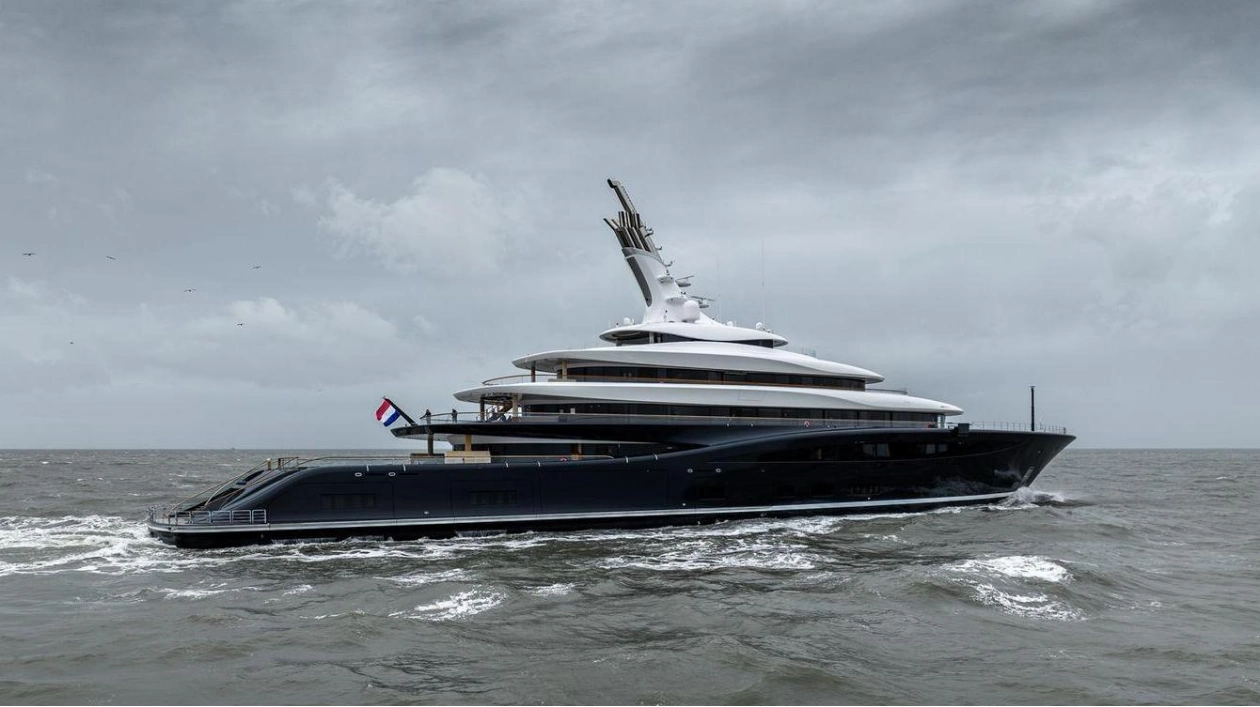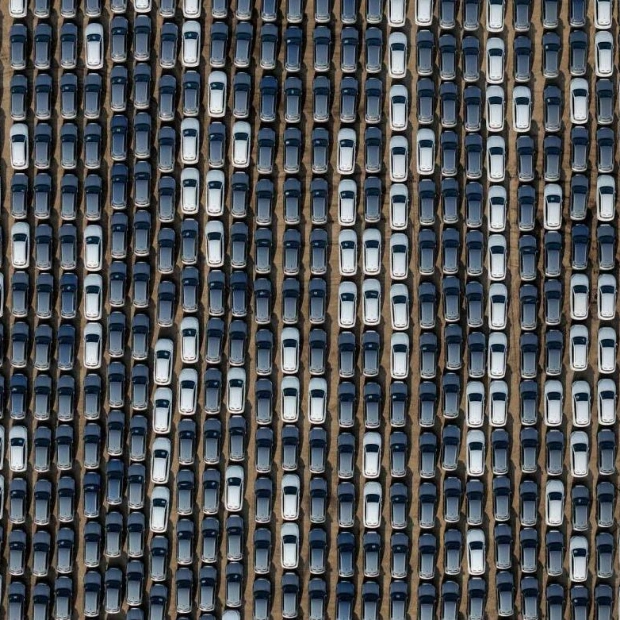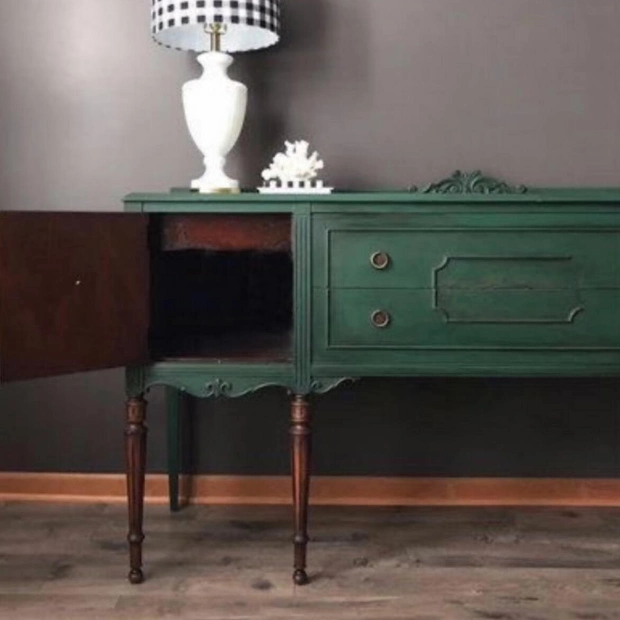The 118.8-metre Feadship Project 821 has been spotted during sea trials near IJmuiden, Amsterdam. As the world's first fuel-cell-powered superyacht, Project 821 was launched in May and quickly entered the market with Edmiston. This innovative vessel stores liquid hydrogen at temperatures below -253°C and employs a fuel cell system to generate electricity for both onboard amenities and coastal navigation. The project necessitated substantial regulatory advancements regarding hydrogen storage and fuel-cell systems at various levels, according to the shipyard. The exterior and interior designs are the work of British studio RWD.
"Our goal has been to pioneer new, clean technology not just for this project," stated Jan-Bart Verkuyl, Feadship director and CEO of Royal Van Lent Shipyard, "but for the global maritime industry." In addition to its eco-friendly credentials, Project 821 also holds the title of the largest motor yacht ever built in the Netherlands, surpassing the 118.8-metre Launchpad by approximately 30% in volume. The yacht features a variety of luxurious amenities, including a semi-submerged Neptune lounge, cinema, library, medical facility, and an 8.2-metre pool with a contraflow system. Light-enhancing elements include an atrium with a staircase that encircles an elevator and floor-to-ceiling windows with clear glass balustrades offering panoramic views.
The yacht incorporates "Nikki Beach" style elements and is designed to evoke the feeling of a "secluded, four-level townhouse by the sea." It can accommodate up to 30 guests across 12 cabins, with configurations available for smaller groups. Intimate spaces such as a coffee corner and games niche are also included. Charlie Baker, director at RWD, expressed the studio's pride in being part of such a forward-thinking project, hoping it will inspire others to think differently in the future. The interior design features a "coastal" ambiance created with textured fabrics, leathers, marble, rattan, fumed and taupe eucalyptus, and limed oak. For the exterior, RWD collaborated with Feadship to incorporate more hull openings than ever before, including fourteen balconies and seven unfolding platforms, effectively condensing the yacht's immense volume into a sleek form.
Developing a safe method for storing compressed liquid hydrogen was one of the primary challenges, according to a Feadship representative. "Hydrogen is lightweight, but safely storing it on a vessel requires a double-walled cryogenic storage tank," they explained. "This involves a large, well-insulated cooling box in a dedicated room." The space required for hydrogen storage is eight to ten times greater than that for an equivalent amount of diesel fuel. Project 821 boasts a 92-square-metre hydrogen storage area, which, along with the vent stacks for water vapour exhaust, added four metres to the yacht's original length. In the future, this space could potentially be used for storing methanol, a liquid fuel that can be stored at ambient conditions.
While Feadship acknowledges that even a yacht of Project 821's size cannot carry enough liquid hydrogen for a transoceanic voyage, the shipyard aims to minimize hotel load emissions. According to the Yacht Environmental Transparency Index (YETI), hotel load accounts for approximately 70-78% of a yacht's annual energy consumption. Jamie Edmiston, CEO of Edmiston, described the project as "the best yacht ever built," emphasizing the goal of creating the greenest and most environmentally advanced yacht without compromise. In terms of power and propulsion, the yacht is equipped with two 900kW MTU generators, three 2,500kW MTU generators, and 16 185kW PowerCell H2 generators. Key specifications for Project 821 include a 6,500 nautical mile range at 14 knots and a 19-metre beam. This project is a significant milestone on Feadship's path to developing "net zero" yachts by 2030, with Jan-Bart Verkuyl highlighting the importance of fuel cells in the future of yachting. "We have demonstrated that cryogenic storage of liquified hydrogen within a superyacht is a viable solution," he said. "Future advancements in fuel cells and onboard reforming of methanol to hydrogen are on the horizon."
Source link: https://www.boatinternational.com






